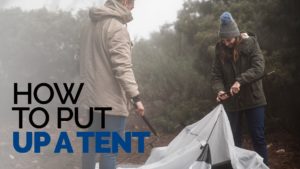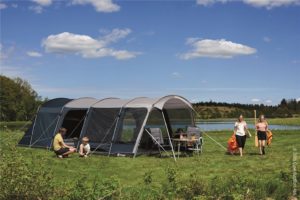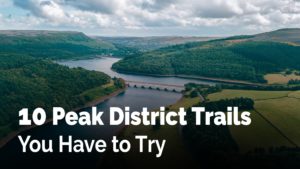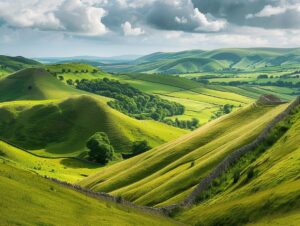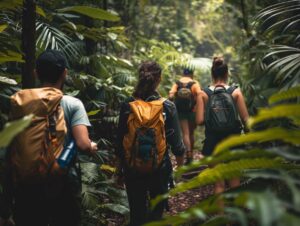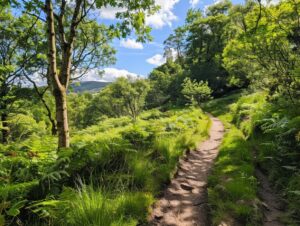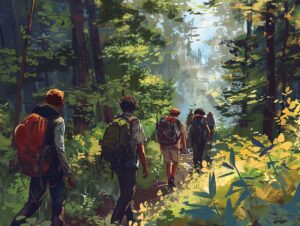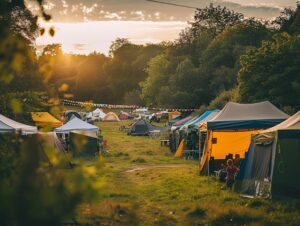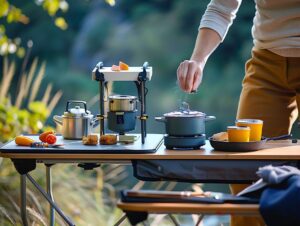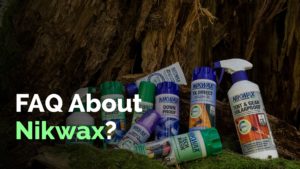
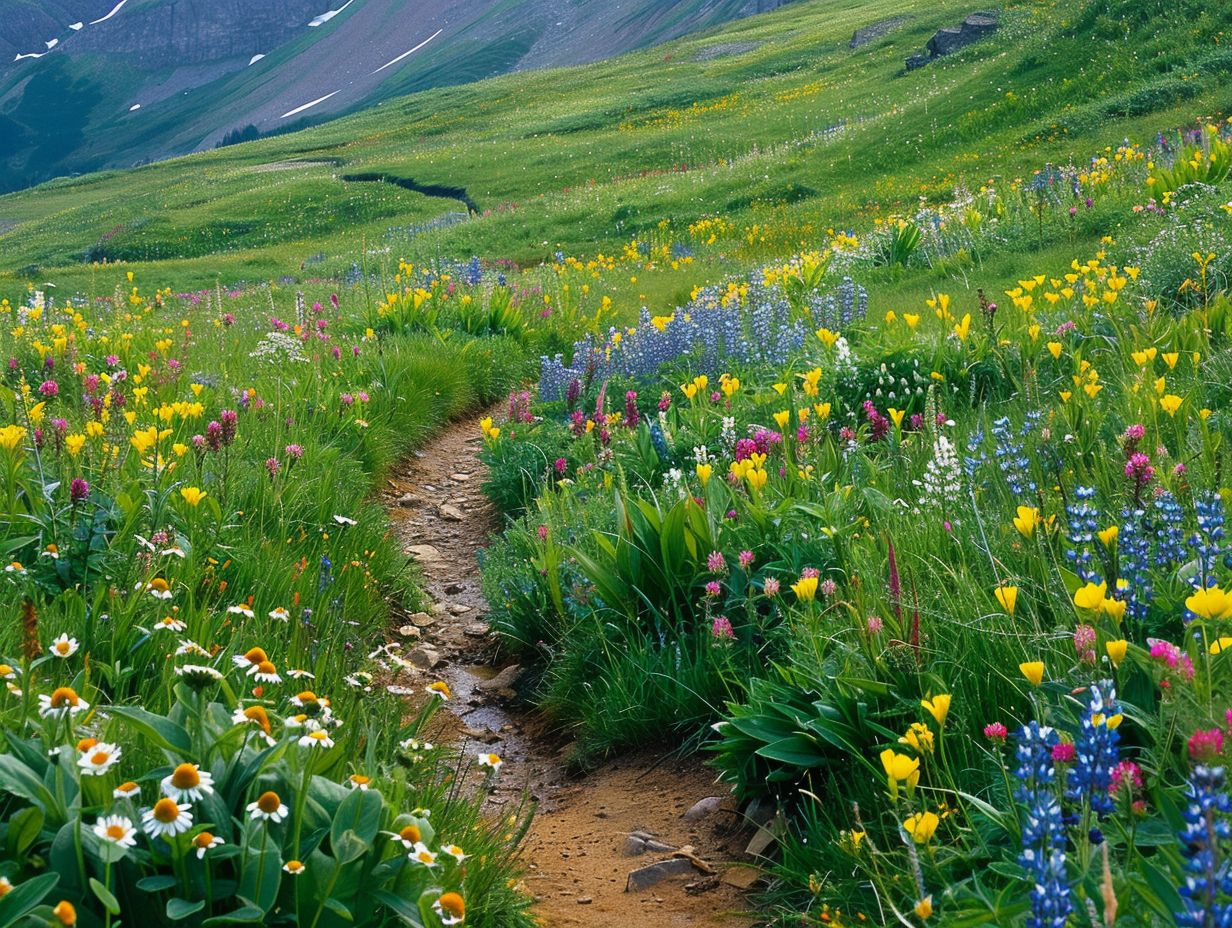
Vaibhav
- Categories: Hiking
Are you a nature lover looking to embark on a wildflower walk? Explore the best trails for wildflower walks, including [Trail Name 1], [Trail Name 2], [Trail Name 3], [Trail Name 4], and [Trail Name 5]. Discover the best times to go on wildflower walks, from spring to fall, and learn what essentials to bring, such as comfortable walking shoes and a camera. Find out how you can support wildflower conservation efforts and join us on a journey through nature’s colourful displays on these stunning trails.
Key Takeaways:

- Discover the best trails for wildflower walks, including [Trail Name 1], [Trail Name 2], [Trail Name 3], [Trail Name 4], and [Trail Name 5].
- Plan your wildflower walks for the best times to see spring, summer, and fall wildflowers.
- Be prepared for your wildflower walks with comfortable shoes, water and snacks, a camera or binoculars, and sunscreen and bug spray.
- Support wildflower conservation by staying on designated trails, refraining from picking or disturbing wildflowers, and participating in citizen science projects.
What Are the Best Trails for Wildflower Walks?
Discovering the optimal trails for wildflower strolls throughout the United States can offer a captivating experience, particularly during peak bloom seasons in the spring when the scenery is embellished with vivid hues and a variety of flora.
Whether one is a seasoned trekker or a leisurely nature enthusiast, there exist a plethora of hiking routes that guarantee striking panoramas and exceptional wildflower spectacles.
1. Joshua Tree National Park
Joshua Tree National Park is internationally acclaimed for its breathtaking wildflower exhibitions, particularly during the spring season, featuring an array of hiking trails that showcase the distinctive flora of the park.
Embarking on the trails at Joshua Tree National Park amidst the height of the bloom season presents an enchanting spectacle. Among the essential trails for enthusiasts of wildflowers are the Lost Palms Oasis Trail, the Barker Dam Trail, and the Desert Queen Mine Trail.
These paths meander through the desert terrain, adorned with resplendent blooms of Mojave aster, desert marigold, desert dandelion, and other varieties.
For individuals in pursuit of the most exceptional wildflower showcase, a visit to the park in March and April is strongly advised, as this period offers the most magnificent array of colours.
2. Mt. Rainier
Mount Rainier presents some of the most picturesque wildflower hikes in Washington State, featuring trails that guide visitors through meadows bursting with vibrant colors during the spring and summer seasons.
The Longmire area is renowned for its easy and family-friendly trails, such as the Trail of the Shadows, which meanders through verdant forests and expansive meadows where striking wildflowers like lupine and Indian paintbrush bloom profusely.
Venturing into Paradise Valley, hikers are greeted with breathtaking views of the iconic Mount Rainier itself, set against backdrops of magenta fireweed and delicate avalanche lilies. These trails not only offer a visually captivating experience but also provide an opportunity to observe the diverse ecosystem flourishing within the confines of Mount Rainier National Park.
3. Brainard Lake Recreation Area
Situated in Colorado, the Brainard Lake Recreation Area stands out as a premier destination for enthusiasts of wildflowers, boasting several trails that showcase stunning floral exhibitions during the spring and summer months.
Noteworthy among these trails are the Pawnee Pass Trail and the Blue Lake Trail, which have gained recognition for their profusion of wildflowers, including vibrant columbines, delicate asters, and colourful paintbrushes.
The optimal period for observing this floral extravaganza typically spans from late June to early August, when the alpine meadows are teeming with blossoming wildflowers.
Hikers have the opportunity to immerse themselves in a myriad of colours and scents as they navigate these picturesque pathways, culminating in an exceptionally captivating experience for aficionados of the natural world.
4. Canyon Creek Meadows
Canyon Creek Meadows presents an enticing opportunity for wildflower enthusiasts seeking picturesque hikes amidst lush meadows adorned with vibrant blooms in the spring and early summer seasons.
The optimal period to traverse the trails at Canyon Creek Meadows typically spans from mid-June to early August, coinciding with the peak bloom of wildflowers that imbue the landscape with a lively and captivating charm.
Hikers can anticipate encountering an assortment of wildflowers such as lupine, paintbrush, columbine, and Indian paintbrush along their journey. The kaleidoscope of hues and fragrances emanating from the blossoms further enhances the overall enchanting ambiance of trekking through this idyllic locale.
5. Green Mountain Club, Vermont
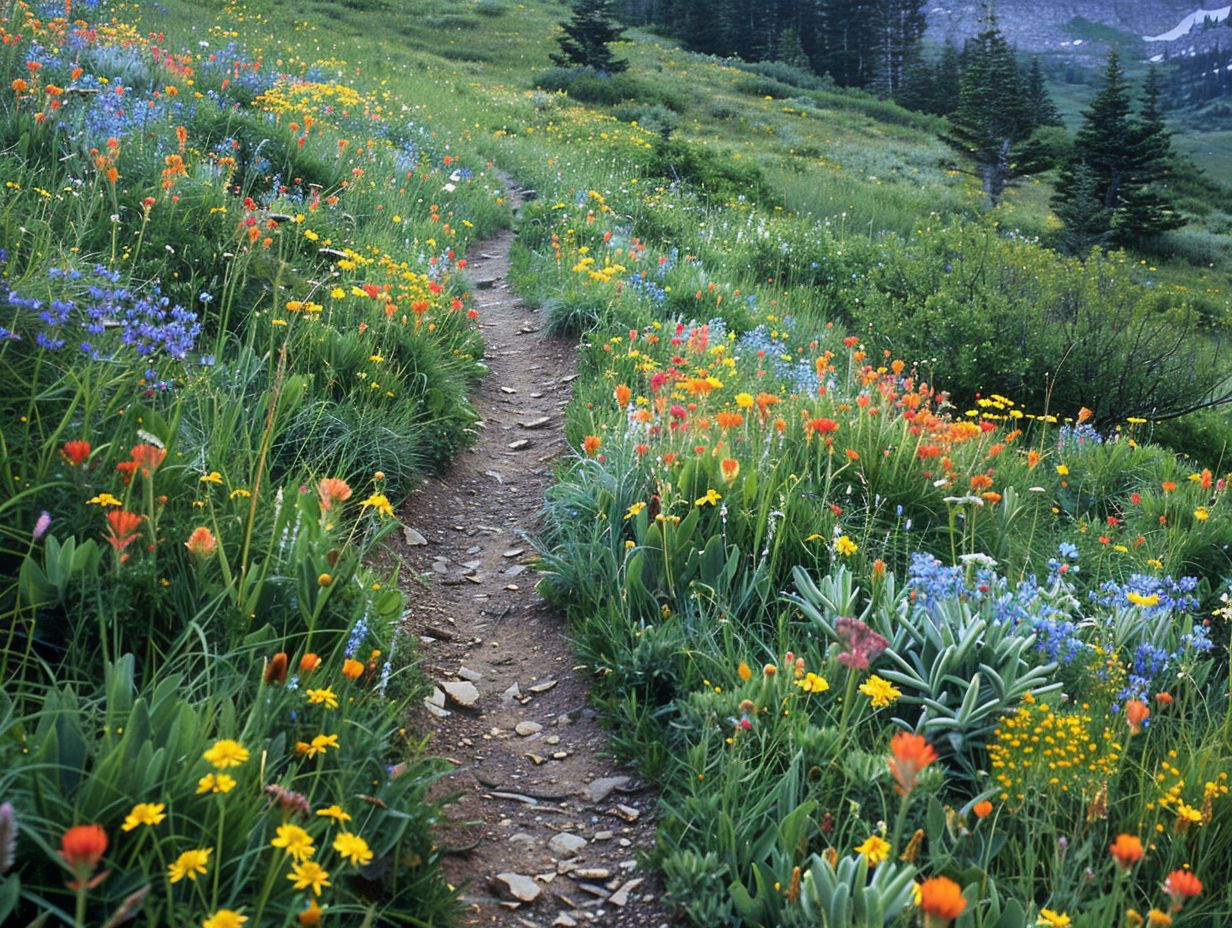
The Green Mountain Club in Vermont provides a selection of wildflower hikes tailored to nature enthusiasts seeking to immerse themselves in the vibrant spring blossoms of the region. Numerous trails under the club’s stewardship, such as the Long Trail and the Appalachian Trail in Vermont, are notably esteemed for their striking showcases of wildflowers.
Hikers can anticipate encountering a diverse assortment of blooms, including trilliums, violets, lady’s slippers, and various others. The optimal period for undertaking these hikes typically spans from late spring to early summer, coinciding with the peak bloom of wildflowers, thereby establishing an idyllic setting for outdoor enthusiasts to relish their excursions through nature.
What Are the Best Times to Go on Wildflower Walks?
The optimal periods for engaging in wildflower walks are contingent upon the region and particular trails in question. Broadly speaking, spring, summer, and autumn present distinct occasions to observe varying bloom phases and floral displays.
1. Spring Wildflowers
Spring is widely recognised as one of the most favoured seasons for wildflower hikes, as numerous trails throughout the United States showcase remarkable exhibitions of blossoming flowers as the temperatures rise.
During this vibrant period, hikers have the opportunity to observe a diverse array of colours, spanning from subtle bluebells to vivid Indian paintbrush. Notable regions such as the Great Smoky Mountains in Tennessee and North Carolina, along with California’s Antelope Valley Poppy Reserve, are esteemed for their striking springtime floral showcases.
The optimal period to witness these blooming marvels generally occurs between March and May, when the scenery becomes adorned with an assortment of wildflowers. These trails not only offer picturesque panoramas but also provide an opportunity to intimately encounter the splendour and variety of nature.
2. Summer Wildflowers
Summer wildflowers can be observed in various geographical regions, particularly at elevated altitudes where the lower temperatures prolong the flowering period. These vivid blossoms enhance the aesthetic appeal of hiking routes and mountainous terrains.
For instance, in the Rocky Mountains, enthusiasts may come across a diverse array of summer wildflowers, including Indian paintbrush, columbines, and lupines.
The Pacific Crest Trail, which spans from Mexico to Canada, offers a spectacle of wildflowers in full bloom during the months of July and August. Areas such as the Sierra Nevada in California and the Cascades in the Pacific Northwest are renowned for their spectacular floral exhibitions.
The most opportune period to witness these blooming marvels typically ranges from late spring to mid-summer, contingent on the specific locale and altitude.
3. Autumn Wildflowers
Autumn wildflowers present a striking contrast to the changing foliage, providing distinctive hiking experiences across various regions of the country.
Throughout the autumn season, hikers can anticipate encountering a diverse array of vivid wildflowers blossoming along hiking trails. Ranging from golden asters and purple asters to the renowned goldenrods and mistflowers, the scenery is infused with vibrant hues.
Regions such as the Appalachian Mountains and the Pacific Northwest offer hikers the opportunity to appreciate these picturesque displays from September to November. Trails like the Blue Ridge Parkway in the Southeast and the Alpine Lakes Wilderness in the West serve as ideal locations to witness these breathtaking autumn blooms.
What Should You Bring on a Wildflower Walk?
- Before setting out on a wildflower walk, it is essential to prepare by ensuring the required items are brought along to ensure a safe and enjoyable experience. These essential items include:
- Walking boots
- A nature guide
- A camera
- Water
- Snacks
- A picnic rug
1. Comfortable Walking Shoes
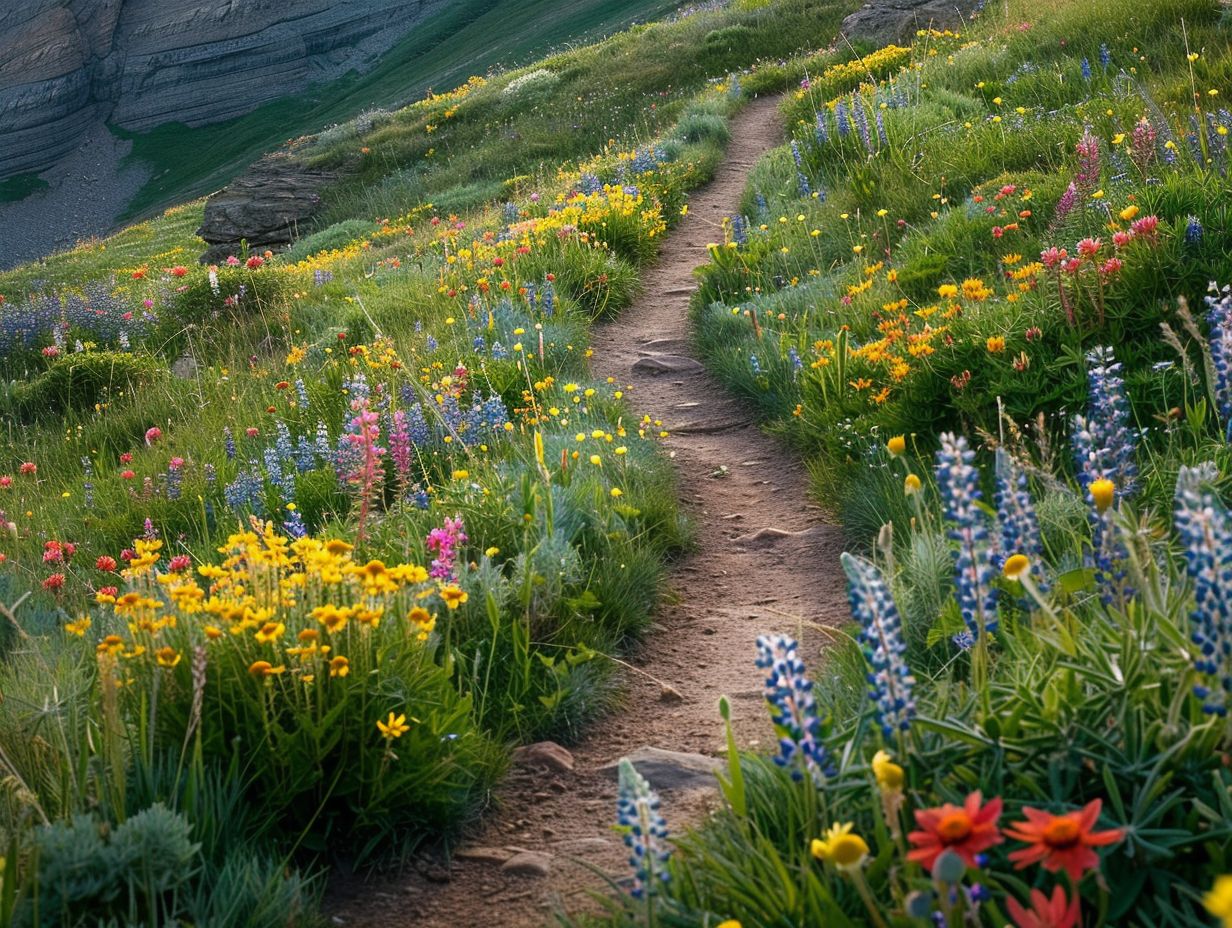
It is essential to wear appropriate footwear, such as hiking boots, when traversing the diverse terrain of wildflower trails. Reliable hiking boots not only deliver comfort and support during extended walks through meadows and forested paths but also provide stability and safeguard against sharp rocks and uneven surfaces.
When choosing hiking boots for wildflower excursions, it is advisable to opt for those with robust ankle support to reduce the risk of injuries and durable soles with excellent grip for slippery conditions.
It is important to ensure a proper fit by trying on various sizes and brands to discover the most suitable option for your feet, enhancing your overall hiking experience and appreciation of the flourishing natural surroundings.
2. Water and Snacks
It is imperative to bring water and snacks to maintain proper hydration and sustenance during a recreational wildflower walk.
Prioritising hydration and nutrition is essential when undertaking any hiking expedition, as the physical exertion involved can rapidly deplete the body’s resources.
For shorter hikes, it is advisable to carry a minimum of one to two litres of water per individual to ensure an ample supply is available.
In terms of snacks, select lightweight, energy-rich options such as trail mix, energy bars, fruits, or sandwiches. These selections offer a well-rounded combination of carbohydrates, proteins, and fats, sustaining energy levels throughout the duration of the journey.
3. Camera or Binoculars
The experience of a wildflower walk can be greatly enhanced by the use of a camera or binoculars, as they offer the opportunity to both capture the beauty of the flowers and observe them from a distance.
The presence of a camera ensures that one does not miss any picturesque moments during the hike. Experimenting with various angles and lighting conditions allows for the vibrant colours and intricate details of the wildflowers to be accurately captured.
On the other hand, binoculars provide the ability to appreciate the flora from a distance without disturbing their natural habitat. They can be used to identify rare or distant blooms that may otherwise remain unnoticed.
It is important to maintain patience and take the time to fully appreciate the stunning sights present in one’s surroundings.
4. Sunscreen and Insect Repellent
It is essential to apply sunscreen and bring insect repellent to safeguard your skin from the sun and prevent insect bites during your wildflower walk.
The ultraviolet (UV) rays from the sun have the potential to cause sunburn, premature ageing, and even skin cancer, emphasising the importance of sunscreen in your outdoor routine. When selecting sunscreen, opt for a broad-spectrum product with a sun protection factor (SPF) of at least 30, and make sure to reapply it every two hours or after swimming or sweating.
When choosing insect repellent, it is advisable to select a repellent containing DEET or picaridin for effective protection against mosquitoes, ticks, and other insects. Apply the insect repellent to exposed skin and clothing, following the instructions provided on the product label.
By following these preventative measures, you can fully enjoy your hike without worrying about sunburn or irritating insect bites.
How Can You Support Wildflower Conservation?
It is imperative to advocate for wildflower conservation to uphold the natural beauty and biodiversity of hiking trails and wildflower habitats. There are numerous avenues through which hikers can actively contribute to these conservation efforts.
1. Stay on Designated Trails
Adhering to designated trails is essential for reducing environmental harm and safeguarding delicate wildflower habitats. When individuals stray from established paths, they risk inadvertently damaging fragile plant species, thereby disrupting the ecological equilibrium.
Wildflowers, pivotal in sustaining bees, butterflies, and various pollinators, are especially susceptible to harm from human foot traffic. Deviating from trails can result in soil erosion, compaction, and disturbance of wildlife habitats.
By remaining on designated routes, outdoor enthusiasts can contribute to the preservation of the natural environment’s beauty and vitality, ensuring its enjoyment by future generations.
2. Do Not Pick or Disturb Wildflowers
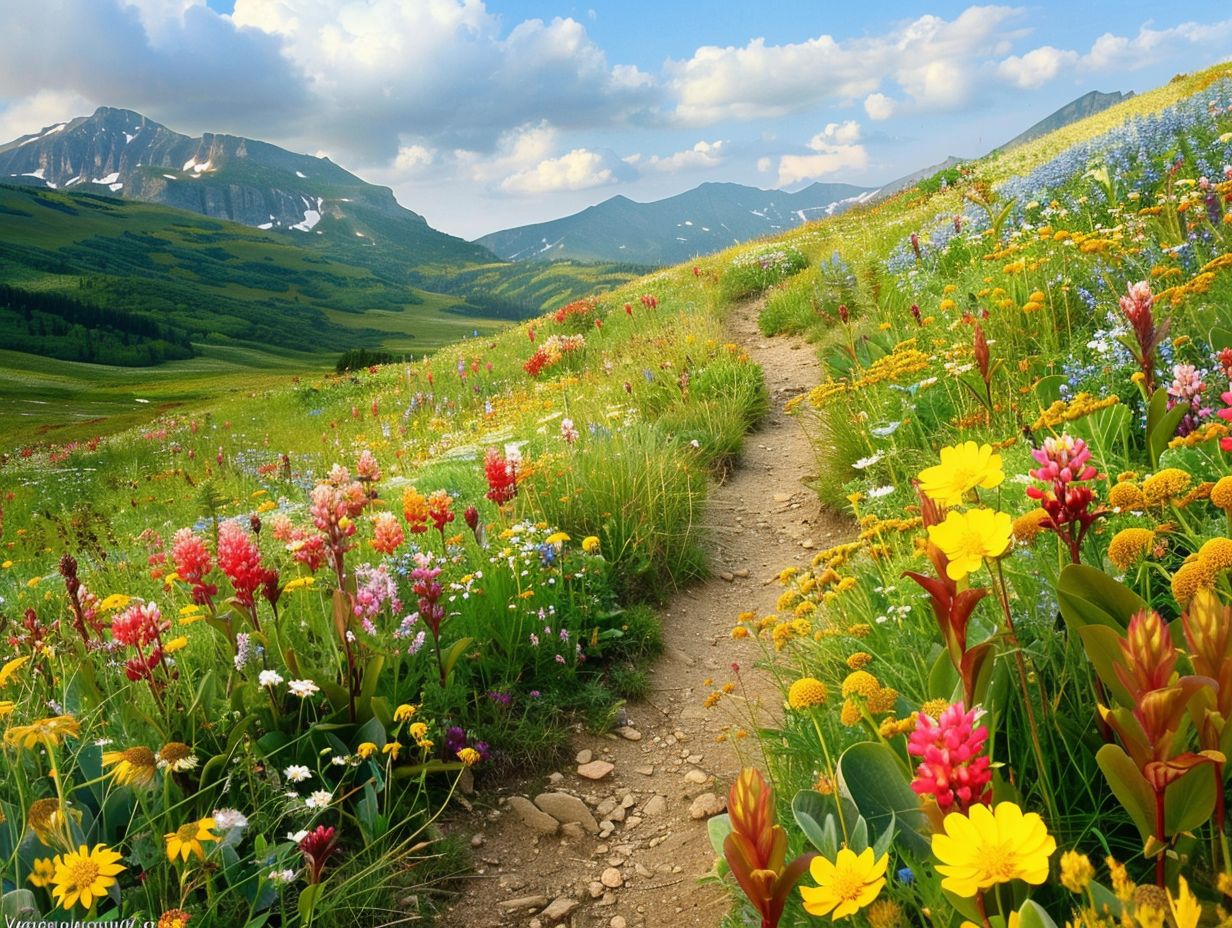
Preserving wildflowers by refraining from picking or disturbing them is crucial for their conservation, ensuring their continued growth and reproduction within their natural environments.
When wildflowers are plucked, their seeds often do not reach maturity and fail to disperse effectively, negatively impacting their reproductive capabilities and ability to maintain sustainable populations.
The act of uprooting wildflowers can disrupt the fragile equilibrium of ecosystems, leading to disturbances in the food chain and habitats of numerous wildlife species that depend on these plants for survival.
Rather than picking wildflowers, individuals can appreciate them in their untouched surroundings, capture their beauty through photography, or participate in organised wildflower excursions guided by experts.
These educational walks provide valuable insight into the various species of wildflowers, their ecological importance, and the significance of preserving their natural habitats.
3. Participate in Citizen Science Projects
Engaging in citizen science initiatives, such as those coordinated by the National Audubon Society, can make a significant contribution to wildflower conservation endeavours. These initiatives provide walkers with a distinctive opportunity to directly participate in the preservation of our natural surroundings.
By actively taking part, walkers can assist in the collection of crucial data concerning wildflower populations, blooming periods, and biodiversity, all of which are fundamental for monitoring the ecological well-being of local ecosystems.
Through their observations and contributions, walkers play a pivotal role in enhancing our understanding of indigenous flora and bolstering conservation programmes.
This hands-on engagement not only nurtures a profound connection to the natural world but also enables individuals to have a tangible influence on the safeguarding of wildflowers.
Frequently Asked Questions
What are wildflower walks and why are they popular among nature lovers?
Wildflower walks are guided or self-guided hikes through trails that are known for their abundance of colorful wildflowers. These walks are popular among nature lovers because they provide a unique opportunity to experience and appreciate the beauty and diversity of wildflowers in their natural habitat.
What are some of the best trails for wildflower walks?
Some of the best trails for wildflower walks include Mount Rainier National Park’s Skyline Trail, Great Smoky Mountains National Park’s Porters Creek Trail, and California’s Antelope Valley California Poppy Reserve.
When is the best time to go on a wildflower walk?
The best time to go on a wildflower walk varies depending on location, but generally late spring and early summer are the best times for viewing wildflowers in full bloom. It’s important to check the bloom reports for the area you plan to visit to ensure you catch the peak season.
What should I bring on a wildflower walk?
It’s important to bring proper hiking gear, including comfortable shoes, water, and sunscreen. You may also want to bring a camera, binoculars, and a guidebook to help identify the different types of wildflowers you may encounter.
Are wildflower walks suitable for all ages and hiking abilities?
Some wildflower walks may be more challenging than others, so it’s important to do research and choose a trail that is suitable for your fitness level and hiking experience. However, there are many trails that are suitable for all ages and abilities, so it’s possible to find a wildflower walk that everyone can enjoy.
Can I pick wildflowers during a wildflower walk?
No, it is important to leave wildflowers in their natural habitat. Picking them can disrupt the ecosystem and prevent others from enjoying their beauty. It’s best to take pictures and leave the flowers for others to enjoy.
Share:
By submitting your email address, you are agreeing to receive marketing emails from theexpertcamper.co.uk.
We’ll never share your email address and you can unsubscribe at any time. Privacy policy
Related Posts
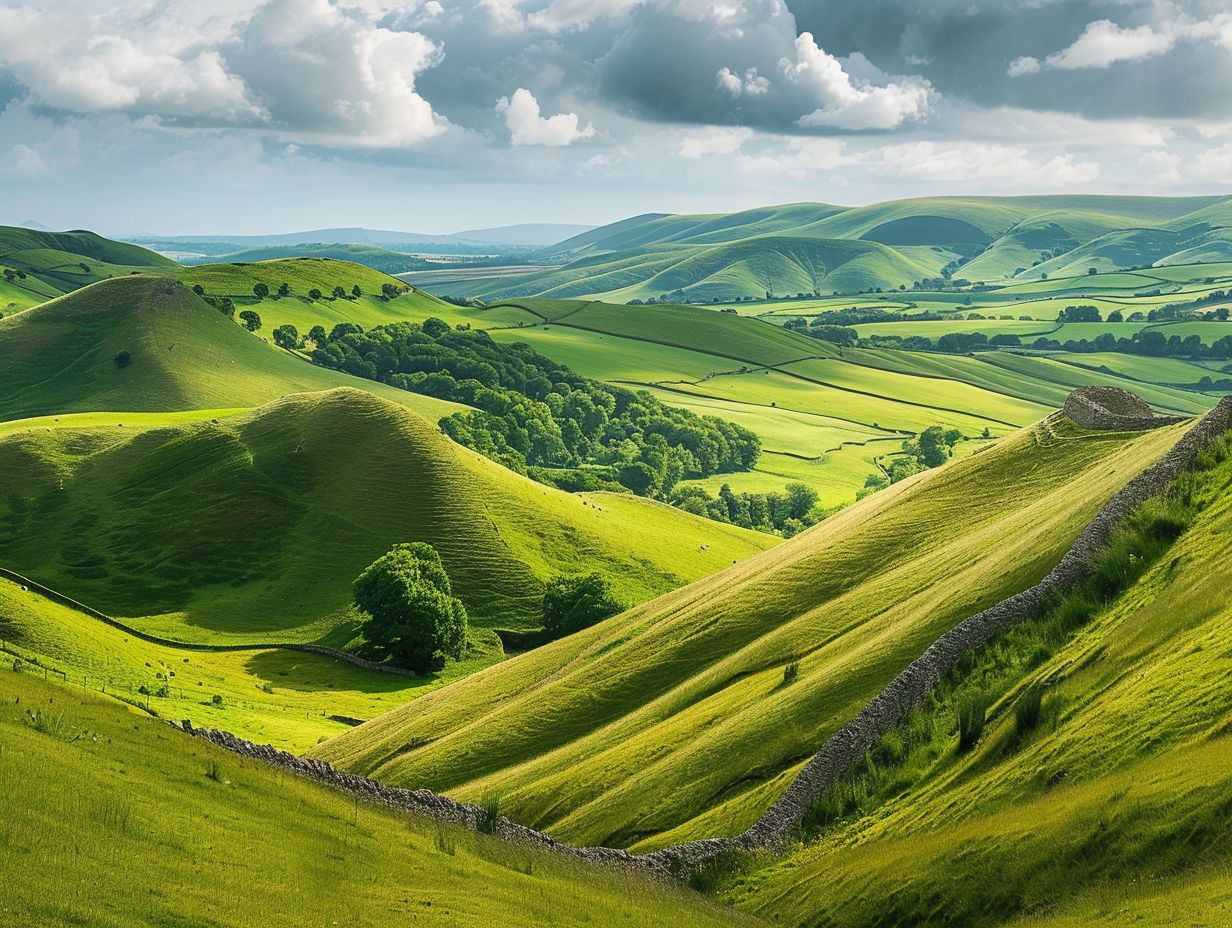
A Seasonal Guide To Hiking In The Peak District
Are you ready to lace up your hiking boots and explore the stunning landscapes of the Peak District? This seasonal guide will take you through
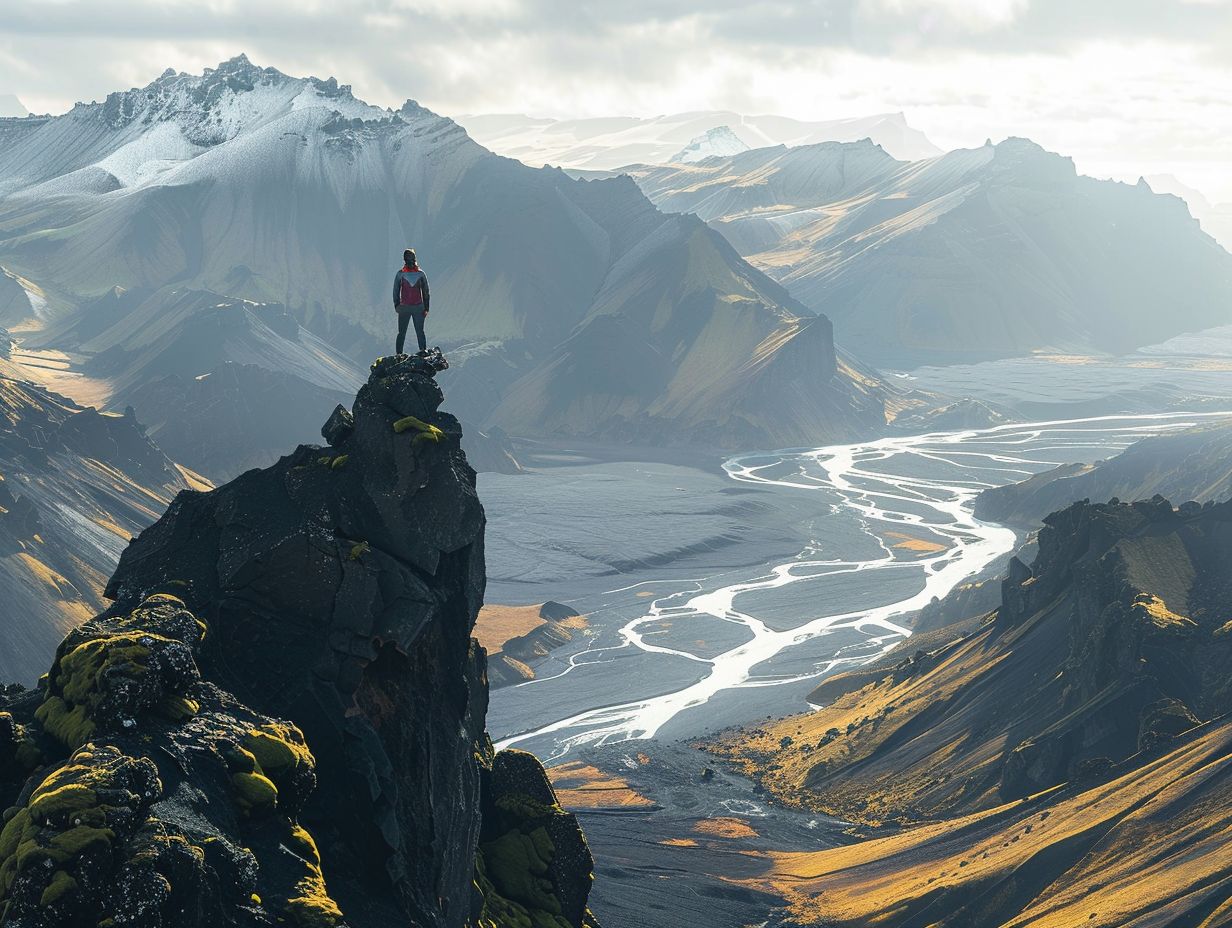
Hiking Challenges Preparing For Your First Ultrahike
Are you ready to take your hiking adventures to the next level? Ultra-hiking offers a unique combination of physical and mental challenges, breathtaking scenery, and
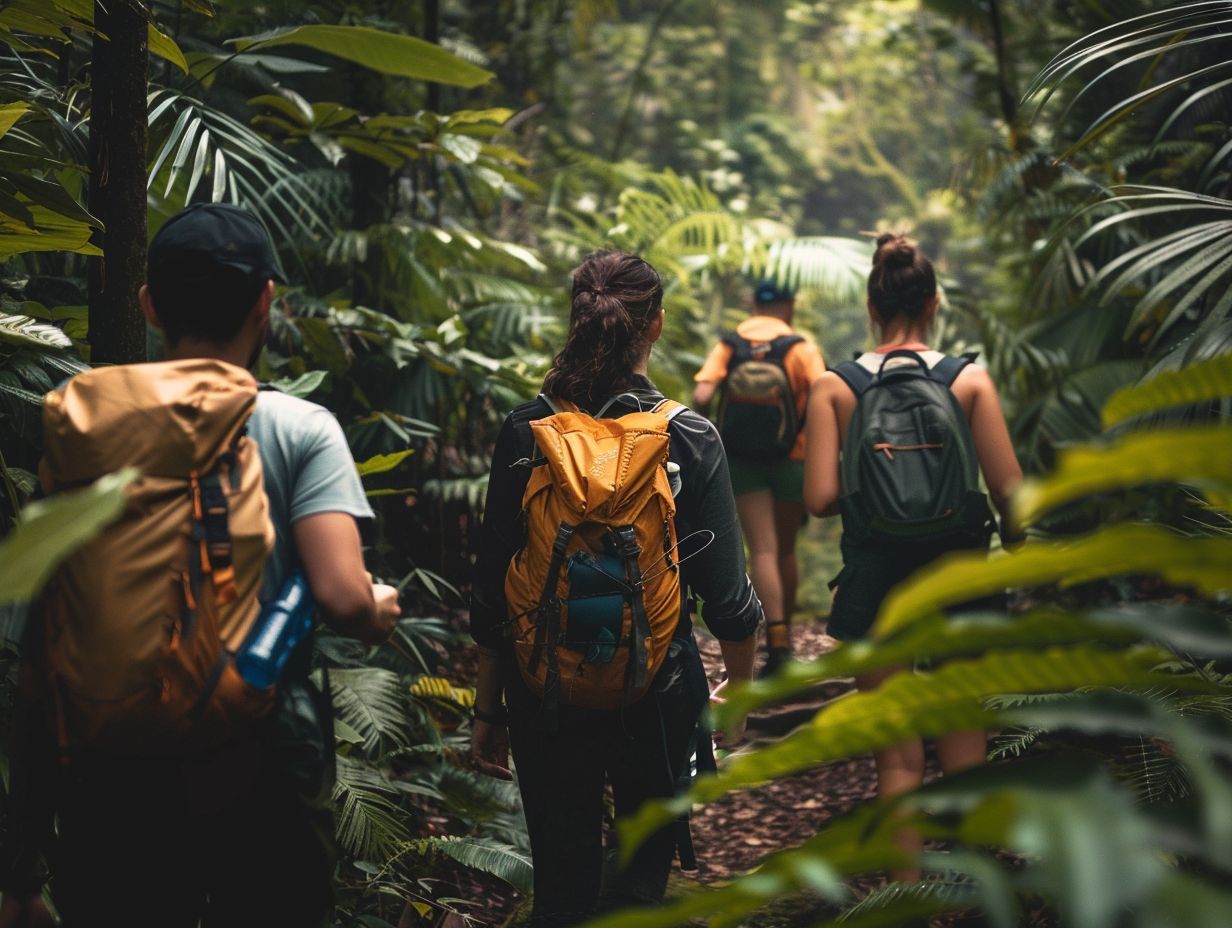
Ecofriendly Hiking Tips For Sustainable Adventures
Are you an outdoor enthusiast looking to minimise your impact on the environment while enjoying the great outdoors? Eco-friendly hiking is the perfect solution! We
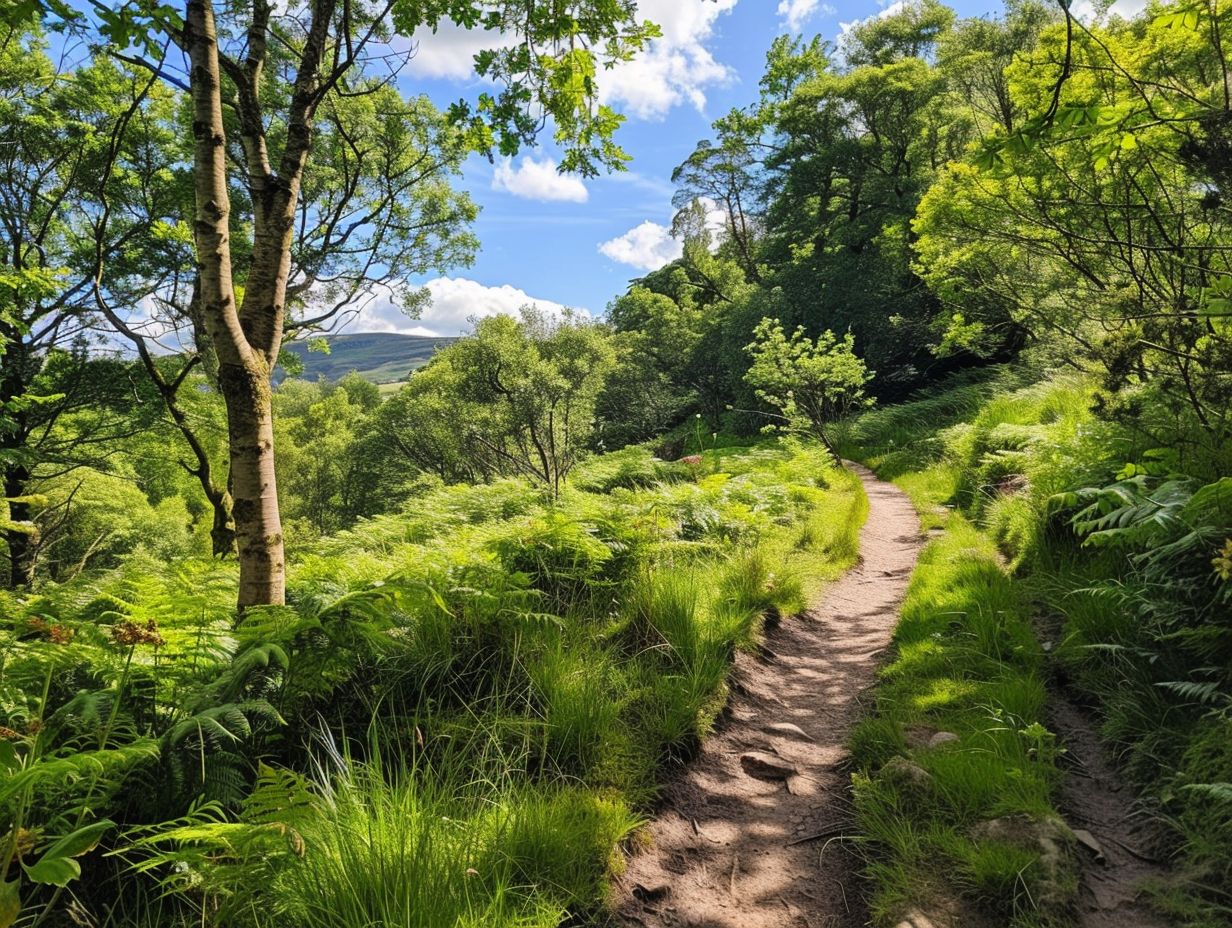
The Best Hiking Trails For Experiencing UK Wildlife
When exploring the picturesque hiking trails of the UK, you can expect to encounter a diverse array of wildlife. From majestic birds soaring overhead to

Wildflower Walks The Best Trails For Nature Lovers
Are you a nature lover looking to embark on a wildflower walk? Explore the best trails for wildflower walks, including [Trail Name 1], [Trail Name


